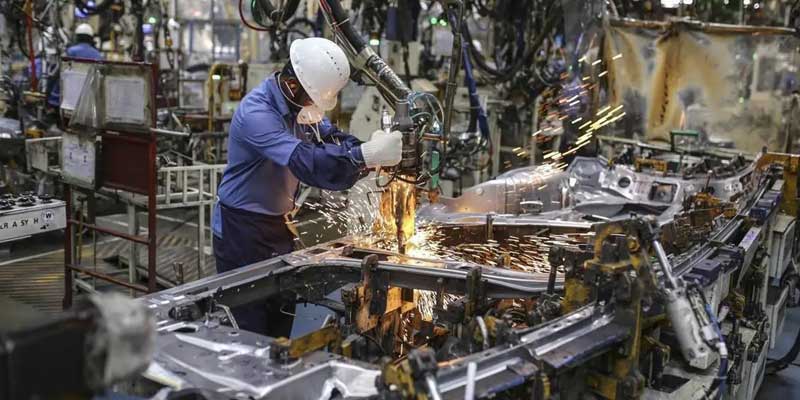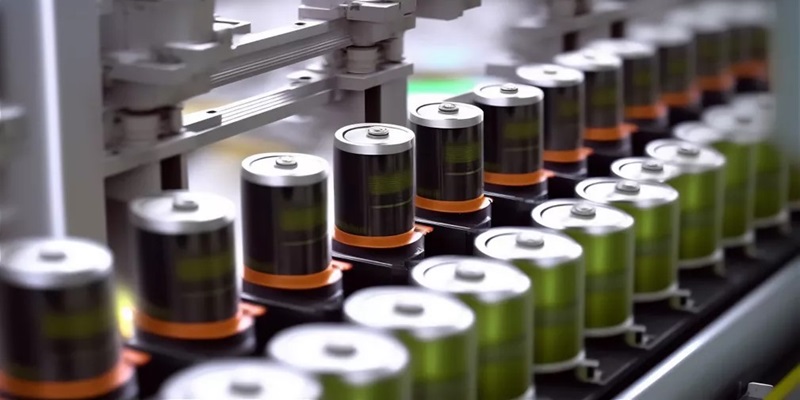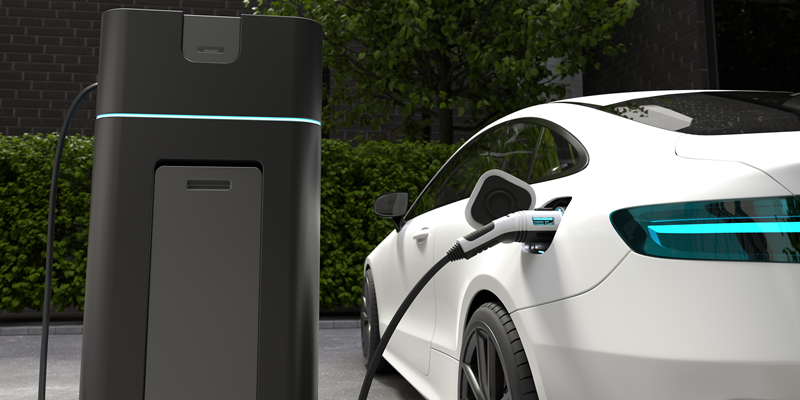Schedule a Call Back
Manufacturing Agenda for Modi 3.0
 Articles
Articles- Jun 28,24

As the National Democratic Alliance (NDA), under the leadership of Prime Minister Narendra Modi, assumes power for the third consecutive term, expectations will be running high for transformative policies aimed at propelling India’s economy. As a key pillar of the economy, manufacturing sector will have to play a pivotal role in making the country an economic powerhouse. Though working in a coalition may hinder the government’s ability to undertake tough reforms, the industry can be assured of continuity in the policy process.
Ever since the NDA government was formed at the center in 2014, PM Modi has been an advocate of a strong manufacturing sector to propel India’s economic progress. As part of its efforts towards making India a manufacturing hub, the government has announced a number of measures - including Production-linked Incentive (PLI) scheme - under its flagship programme of Make in India (later renamed as Aatmanirbhar Bharat scheme in 2020). Despite all these efforts, the contribution of the manufacturing sector to the GDP has remained stagnant at 15-17 per cent for decades. PL Muthusekkar, COO, Hailstone Innovations Pvt Ltd, and Director on Board at Revathi Equipment Ltd, explains, “Manufacturing share looks stagnant because of other sectors growing at a better pace. Unless manufacturing sector grows double the GDP growth rate attaining desired results would be difficult. On competitiveness, we are losing our edge due to increase in cost of manufacturing and inflation compared to other smaller and developing countries. Unless government steps to contain inflation and also improve currency situation where Rupee needs to be strengthened.”
The reforms of the 1990s triggered the expansion of the service sector, which at present contributes over 50 per cent to India’s GDP. The services sector not only contributes considerably to exports, it also attracts high-qualified youth and significant foreign investment. “With the advent of IT in 90s, India lost focus on manufacturing and so, manufacturing industry is not strong in terms of technology. We need to work on robust manufacturing processes that generate consistent quality results at high productivity,” observes Mohini Kelkar, Director, Grind Master Machines Pvt Ltd.
Steady going
The Indian market is currently undergoing a transformative phase marked by both significant opportunities and challenges. Anurag Garg, Country Head & Managing Director, Vitesco Technologies India, comments, “The drive towards sustainable mobility and government initiatives, like the FAME (Faster Adoption and Manufacturing of Hybrid and Electric Vehicles) scheme, have fostered a favourable environment for electric vehicles (EVs). However, the market faces substantial hurdles, including the need for better infrastructure, high initial costs, and the requirement for workforce upskilling to match technological advancements. The manufacturing sector is also dealing with supply chain disruptions, fluctuating raw material prices, and regulatory complexities.”
The Modi government has been successful in bringing down fiscal deficit from 9.2 per cent in 2021-22 (largely due to Covid related expenditure) to 5.8 per cent in 2023-24 with a plan to reduce it to 5.1 per cent by 2024-25. While the revenue expense as a proportion of total expenditure was 89 per cent ten years ago, it will be just 77 per cent in 2024-25.
According to Farrokh N Cooper, Chairman and Managing Director of Cooper Corporation Pvt Ltd, the market in India is currently robust, yet it faces several significant challenges. “Increasing raw material prices and high attrition rates are putting pressure on manufacturing units. Furthermore, the complexity and high rates of GST, coupled with elevated bank interest rates and power charges, are making the sector uncompetitive. Although the government encourages timely tax payments, there are considerable delays in tax refunds, disrupting business operations. Refunds should be processed within a fixed period to ensure financial stability for businesses. Additionally, subsidies need to be simplified and made accessible online with minimal bureaucratic interference. There should be a regulatory body to address customer grievances with state electricity boards in a time-bound manner,” he elaborates.
Since 2014, the share of India's merchandise exports has increased marginally from 1.70 per cent in 2014 to 1.82 per cent in 2023. India's rank in world merchandise exporters also saw marginal improvement from 19th to 17th during the same period. Despite persistent global challenges, India's overall exports increased by 0.23 per cent in FY24 to $778.2 billion as compared with $776.4 billion in FY23. While India's merchandise exports dipped by 3 per cent to $437.1 billion in FY24, service exports rose by 4.85 per cent to $341.1 billion in FY24 as against $325.3 billion in FY23.
For example, plastics exports at $ 11.5 billion witnessing a decline of 3.5 per cent during FY 2023-24 on a YoY basis. “While the export of plastic raw materials fell by 10.1 per cent, the export of value-added plastics was lower by just 2 per cent. Multiple factors impacted the exports including high inflation in key markets; on-going war between Russia-Ukraine; conflict in the Middle East (Israel-Hamas); Red Sea crisis; and softer commodity prices. Further, during 2023-24, the average export price realisations for many products were lower,” elaborates Sribash Dasmohapatra, Executive Director, Plastics Export Promotion Council (Plexconcil).
Dasmohapatra adds, “Some of the more pressing concerns for the industry are non-tariff barriers, like mandatory BIS certification on polymer imports, which are expected to create raw material shortages and escalate production costs. Additionally, Indian buyers are dealing with a 10-15 per cent premium on polymer prices compared to global rates. Together, not only would this impact export competitiveness, but also domestic prices resulting in the import of cheap finished products.”
Manufacturing sector has been facing the persistent challenge of skilled workforce. Kelkar adheres, “Skilled manpower is indeed a grave concern as we are losing the manpower to the other industries like IT, electronics, etc and to multinational companies. So the big challenge for manufacturing industry is to retain the manpower and to enhance their skill. In order to bridge the skill gap, the industry is devising its own training programmes. But, if institutions work closer with industry for training and up-skilling, manufacturing companies will get industry-ready workforce.”
The current state of the global market presents several significant problems for the Indian manufacturing industry. Dhawal Gupta, Co-founder, Subhot Enterprises, suggests, “My immediate hopes for the third term of Prime Minister Narendra Modi are centered on increasing the industrial sector's competitiveness in the face of difficult global market conditions. First off, I see strong legislative backing for the Make in India campaign, which encourages industry-wide innovation and technology adoption. It is essential to simplify regulatory frameworks to lower administrative barriers and enhance the convenience of doing business. In addition, I anticipate that higher infrastructure spending will lower costs and boost efficiency, especially in supply chains and logistics. To close the talent gap, skill development initiatives adapted to the demands of contemporary manufacturing will be essential. Moreover, maintaining prosperity will depend on developing strategic alliances and enacting robust trade laws to handle the complexity of the world economy.”
The government has been trying to prop up exports through free trade agreements (FTAs), with many in the pipeline. However, it has to act cautiously as FTAs signed earlier have not benefited India’s exports. Dasmohapatra states, “The terms of existing FTAs, particularly to mention the India-UAE CEPA, have not significantly boosted exports. While we welcome the government fast tracking FTA renegotiations, we wish to see greater benefits for plastics exports as well, which presently is not the case. High cost of finance and logistics is another key challenge faced by the industry. With the growing number of plastics parks, cluster development goals, we hope that some of the present challenges will be mitigated, and a more conducive environment may be created for manufacturing growth.”
Budget expectations
In the third term, the industry expects continuity in the development agenda which the Modi-government has set so far in the past 10 years. Mohini Kelkar elaborates, “Technology development for public sector always has a horizontal effect across other industries. The initiatives like Make in India will get deeper meaning if public sector companies are mandated to work with private manufacturing sector as a partner to develop higher value added equipment. I think currently, it is at the level of commodity products. When it comes to the higher technology, hand holding of public sector with the Indian companies can lead to better technology developments and this will also help in improving the skills of the people.”
Farrokh Cooper expects the upcoming Union budget to foster a more supportive and streamlined environment for small and medium enterprises (SMEs). “Specifically, I advocate for the introduction of a technological upgradation scheme similar to the PLI scheme to help small forging units modernise and remain competitive. Additionally, I urge the government to address the issue of delayed payments. Current regulations require SMEs to pay bills within 45 days, which is unrealistic given that payments for exports are often received after 180 days, and domestic sales payments are typically delayed by 60 to 90 days. This discrepancy disrupts cash flows and needs urgent resolution,” he adds.
Industry leaders have urged the government to give a policy push to put in more money in skilling/up-skilling the new workforce and re-skilling the existing workforce. The government should aim to create jobs by promoting skill development and vocational training, especially in futuristic areas including AI, robotics, machine learning, drones, chip manufacturing. Kelkar says, “Skill India initiative needs a boost and more cross checks in implementation on ground, particularly in rural India. Training the trainers should get a priority and compulsory to make such programmes effective.”
Dasmohapatra adds, “The plastics industry struggles exclusion from the Technology Upgradation Fund Scheme and the PLI Scheme that are significant to the growth of the manufacturing segment. Plastics have a very wide application and, hence, such measures will not only help achieve Aatmanirbhar goals but also open wide opportunities for employment and entrepreneurship.”
At the moment, India's GDP is growing at a robust pace clocking 7 per cent and 8.2 per cent growth in 2022-23 and 2023-24, respectively. However, this growth has been powered predominantly by the government’s massive capital expenditure (capex) post-Covid. While the central government’s capex in 2018-19 was just Rs 3 trillion (i.e. 1.6 per cent of GDP), it will be Rs 11.11 trillion (3.4 per cent of GDP) as per the 2024-25 interim budget.
Muthusekkar comments, “Budget expectations from industries would be in the form of improving the expenditure from both government and private spending. More developments in coal and other minerals can improve the GDP growth and also enhance the power supply which is an engine to drive manufacturing. Jobs creation an important under the current circumstances and private sector can play a major role in meeting this challenge certainly with the help from the government through PLI and any other new Schemes.”
Streamline GST for a growth overdrive
The auto components industry, accounting for 2.3 per cent of India's GDP and providing direct employment to 1.5 million people, play a crucial role in fostering manufacturing sector's growth. Under GST, the auto components attract two different rates – 18 per cent and 28 per cent. While majority of auto components are at 18 per cent GST, 36 per cent of components are still subjected to 28 per cent GST. While the tax paid is cenvatable in the manufacturing supply chain, ACMA has expressed its concern pertaining to sales of auto components in the aftermarket, which is valued at Rs 674.91 billion. An estimated 35 per cent of the manufacturers supplying aftermarket products are unorganised/indulge in grey operations.
“Over 70 per cent of the players in the aftermarket are MSMEs. Counterfeit products and spurious parts adversely affect these players. A higher GST rate compels smaller component manufacturers to gravitate towards non-compliance and survive by means of under-invoicing and producing sub-standard/spurious components. Many of the safety-critical parts are in the higher bracket of 28 per cent and are compromised, thus putting to risk the lives of drivers, passengers and pedestrians,” stated ACMA in a press release.
A reduction in tax rate would incentivise the unorganised sector to undertake GST compliance and it will also reduce the gap in the price between the standard vis-à-vis the sub-standards. ACMA has recommended that the entire component industry should be bracketed under 18 per cent (GST) rate or lower, as a large aftermarket services almost all categories of products.
While the Government has introduced various schemes to boost the demand of electric vehicles in India, there is an adverse impact on the industry due to inherent inverted duty structure as the GST input on raw material and other overheads are on average of 18 per cent wherein the output tax payable on EVs is pegged at 5 per cent. Since the parts and materials of electric vehicles are taxed at a higher rate in India, reduction in such rates is necessitated to boost localisation levels across the value chains in a bid to curb imports and promote indigenous manufacturing.
Commenting on his budget expectation, Anurag Garg says, “At Vitesco Technologies, we eagerly anticipate the upcoming Union Budget to introduce measures that stimulate growth and innovation in the EV sector. We expect incentives for R&D in advanced EV technologies and enhanced support for infrastructure development, including charging stations and supply chain improvements, to accelerate EV adoption in India. Additionally, we hope for policies that localise the EV supply chain, reducing import dependency and boosting self-sufficiency. Tax incentives or subsidies for local manufacturing of components could bolster domestic production, while fiscal measures such as GST reductions and incentives for retrofitting traditional vehicles can make EVs more accessible to consumers.”
Improving competitiveness
Looking ahead, to improve the competitiveness of the Indian manufacturing industry, several strategic measures are necessary. Cooper elaborates, “Firstly, simplifying subsidies with minimal bureaucratic intervention and transitioning to online platforms would streamline processes and reduce administrative burden. Secondly, establishing a dedicated regulator for state electricity boards could ensure fair and efficient resolution of customer grievances related to power supply. Thirdly, implementing a faster timeline for income tax refunds for honest taxpayers is imperative. These long-term reforms would create a more conducive environment for manufacturers, promoting investment, innovation, and sustainable development across the sector.”
Meanwhile, some industry experts have urged the government to encourage increase in investments in research and development to push exports, which require innovative products to excel in the developed markets. Mohini Kelkar states, “Improving manufacturing competitiveness is not indeed the job of the government; it is up to the industry to really do this. We have to improve our competitiveness through robust technologies, automation and having more appetite for the business. What government can probably do is promote the technology development through various R&D support programs. I would suggest forming mentors groups who can guide the younger team in their efforts. R&D based on industry needs should get priority. Such needs will improve competitiveness. Another important thing, the government can do is to reduce logistics cost for the industry.”
The new Union government needs to focus on streamlining regulations to enhance business competitiveness, further simplify procedures and reduce compliance burdens. Dasmohapatra elaborates, “In the short term, the industry hopes the new government will simplify BIS requirements, reduce polymer price premiums, extend support schemes to all plastics manufacturers, renegotiate FTA terms, etc to promote domestic value addition. For long-term competitiveness, the government should actively pursue enhancement of polymer production capacity, include plastics in the PLI Scheme, improve logistical support, foster technology adoption, strengthen domestic supply chains, invest in skill development, and promote sustainable manufacturing practices. Addressing these issues can significantly boost the industry's growth and global competitiveness.”
Laying a solid foundation for growth
To solidify India’s position as an economic powerhouse, the government will have to strengthen manufacturing with focus on advanced manufacturing, including Industry 4.0 technologies such as artificial intelligence (AI), Internet of Things, robotics and big data. Garg elaborates, “To enhance the competitiveness of the Indian manufacturing industry in the long term, it is recommended that the government prioritise several strategic areas. Firstly, there should be continued investment in advanced manufacturing technologies such as IoT, AI, and robotics under Industry 4.0, aimed at boosting efficiency and productivity. Providing financial incentives like grants, subsidies, and tax benefits to encourage adoption of these technologies could significantly impact the sector. Secondly, fostering robust public-private partnerships is essential to stimulate innovation and strengthen the supply chain resilience. Collaborative efforts involving industry leaders, academic institutions, and governmental bodies can catalyze the development of cutting-edge technologies and establish premier manufacturing centers. Lastly, implementing comprehensive policies that promote sustainable practices and green manufacturing will not only strengthen competitiveness but also ensure long-term economic and environmental viability.”
Modi 3.0’s immediate priority will be to sustain the pace of GDP growth (7 per cent in FY23 and 8.2 per cent in FY24), which will not be easy. In fact, GDP may slip below FY24 level in 2024-25. Instead of wasting its energy on big-ticket reforms (like land, labour, agriculture, etc) that are difficult to pull off in a coalition era, experts feel the government should focus on less contentious issues (financial sector reforms, judiciary-related changes, improving the dispute settlement mechanism, etc), which can be equally effective in triggering growth.
The government, under Prime Minister Modi, is already working towards laying a solid foundation for a strong and developed country by 2047. But to realise this mission the center will have to work closely with the state governments. Muthusekkar expects Make in India 3.0 with more ease of doing business and land reforms to become investment friendly nation with single window system where both State and Central team works together.
India needs to create 20 million jobs a year to gainfully employ its people. Though the unemployment rate for people aged 15 years or above dipped to 3.1 per cent in 2023 from 4.2 per cent in 2021 (according to the Periodic Labour Force Survey’s data), the country has not been able to generate enough jobs in line with demand. Hence, Modi 3.0 needs to focus on labour intensive industries and MSMEs to generate more jobs.
Farrokh N Cooper, CMD, Cooper Corporation Pvt Ltd
The upcoming budget must foster a more supportive and streamlined environment for SMEs. Specifically, I advocate for the introduction of a technological upgradation scheme similar to the PLI scheme to help small forging units modernise and remain competitive.
Anurag Garg, Country Head & MD, Vitesco Technologies India
We anticipate the upcoming Budget to introduce measures that stimulate growth and innovation in the EV sector. We hope for policies that localise the EV supply chain, reducing import dependency and boosting self-sufficiency.
Mohini Kelkar, Director, Grind Master Machines Pvt Ltd
Improving manufacturing competitiveness is not indeed the job of the government; it is up to the industry to really do this. We have to improve our competitiveness through robust technologies, automation and having more appetite for the business.
PL Muthusekkar, COO, Hailstone Innovations, and Director on Board at Revathi Equipment
My expectation is Make in India 3.0 with more ease of doing business and land reforms to become investment friendly nation with single window system where both State and Central team works together.
Sribash Dasmohapatra, Executive Director, Plexconcil
The industry hopes the new government will simplify BIS requirements, reduce polymer price premiums, extend support schemes to all plastics manufacturers, renegotiate FTA terms, etc to promote domestic value addition.
Dhawal Gupta, Co-founder, Subhot Enterprises
It is essential to simplify regulatory frameworks to lower administrative barriers and enhance the convenience of doing business. Also, I anticipate that higher infrastructure spending will lower costs and boost efficiency, especially in supply chains and logistics.
Related Stories

Mitsubishi Heavy Industries reports record FY2024; Issues strong FY2025 outlook
Strong performance was led by the Energy Systems segment, particularly Gas Turbine Combined Cycle (GTCC) and Aero Engines, both of which saw substantial demand and improved margins.
Read more
Exide Industries in battery talks with EV makers
Hyundai is set to become the first Indian automaker to use locally manufactured battery cells for electric vehicles through its agreement with Exide’s subsidiary, Exide Energy Solutions, signed in..
Read more
Foxconn to develop EVs for Mitsubishi
The vehicle will be developed by Foxtron, manufactured in Taiwan by Yulon Motor Co, and launched in the Oceania region (Australia and New Zealand) in the second half of 2026.
Read more












